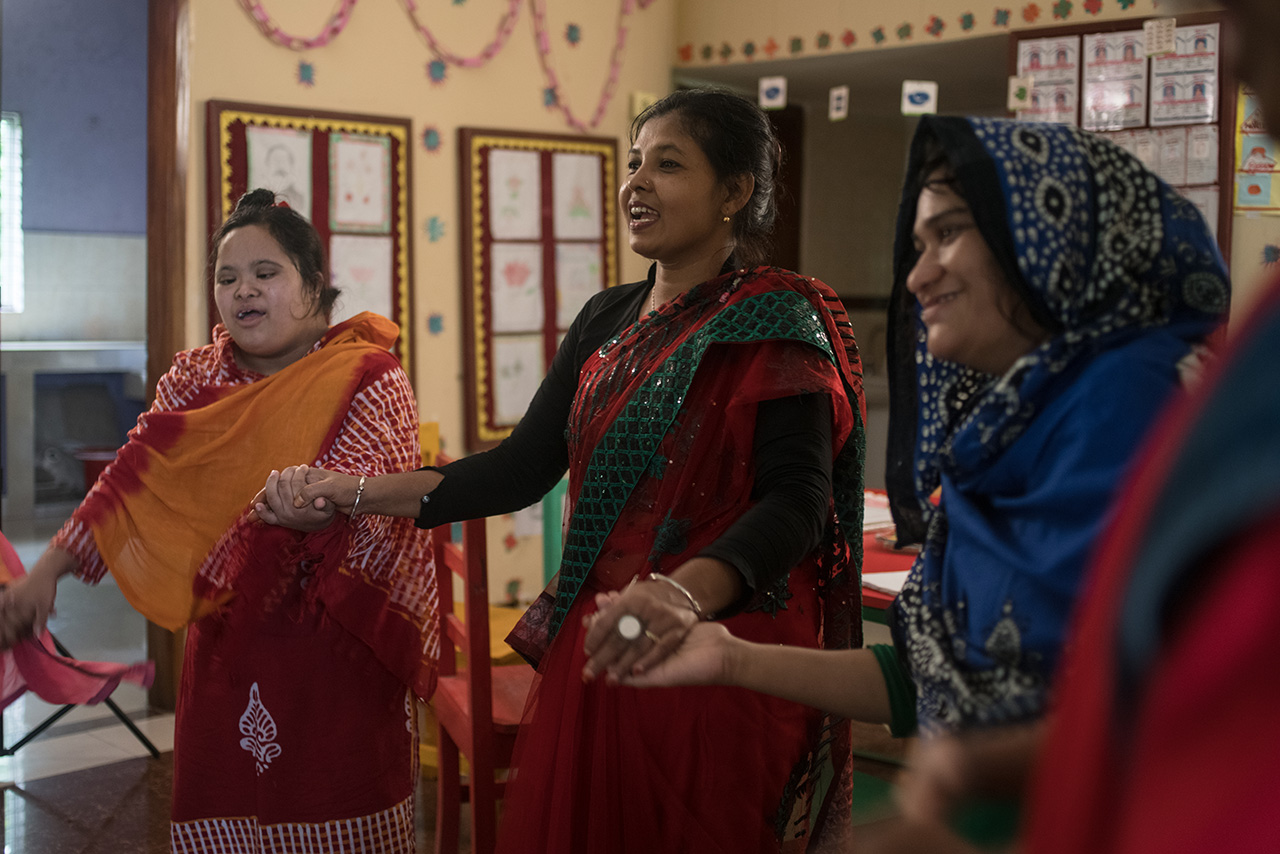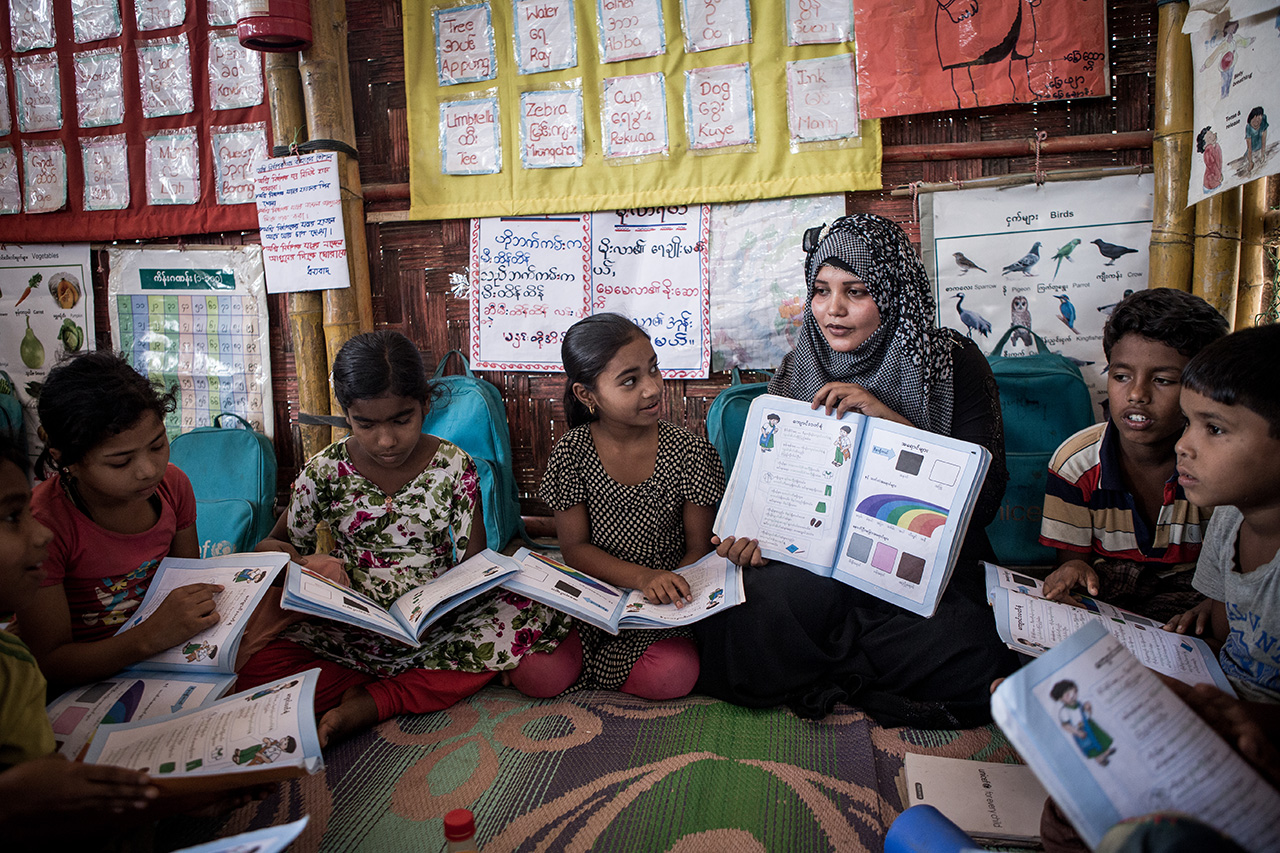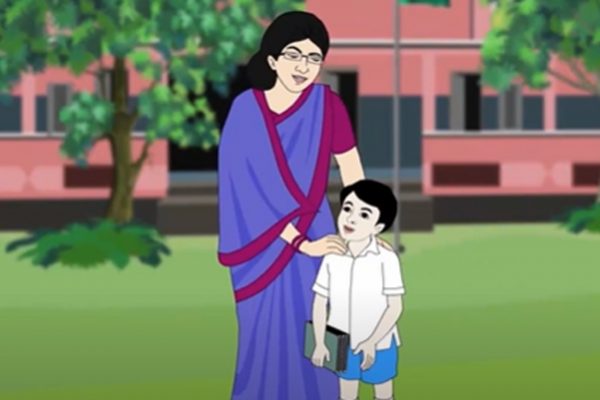Educating a generation: Bangladesh’s barefoot teachers
Reading Time: 3 minutes
How did thousands of women like Rubia Akhter, in the most rural, remote parts of Bangladesh, who previously had little to no education, educate almost 13 million children?
Rubia teaches 25 children with neurodevelopmental disabilities who would otherwise have no access to special education. She went through comprehensive training on how to work with children with neurodevelopmental disabilities.

“I have never stop learning as a teacher,” says Rubia Akhter, “I recently received vocational training so that I can help my students with their crafts, which helps to improve their sensory and motor skills.”
Rubia started teaching in 2003 in one of BRAC’s primary schools. She had no formal qualifications.
Now in 2019, more than 12 million children have graduated from BRAC’s pre-primary and primary schools because of women like Rubia.
How did thousands of women like Rubia, in the most rural, remote parts of Bangladesh, who previously had little to no education, educate almost 13 million children?
Our approach was unconventional, but effective. BRAC has always been a catalyst, creating platforms for people to realise their potential. We believe people, no matter who or where they are, are powerful agents of change – even without the formal qualifications they never had the opportunity to attain.

Teachers in training in the mid 1980s
These local women who became teachers, and leaders in their villages, were no different.
Now, in 2019, the landscape of education in Bangladesh has changed significantly. The government has ensured access to education, with a public school in almost every village in the country. The way BRAC delivered learning has also changed, with newer kinds of schools and centres, interactive digital material, and focus on 21st century skills.
What still remains true to the core of BRAC’s education programme is the idea that teachers serve as leaders – leaders who inspire and engage their students with courage and creativity, rather than making them simply comply.
Leadership is at the core of who our teachers are. Our leaders had to be confident, creative, and constantly learning. This requires rigorous training and continuous assessment.
It begins with a two-week training before she begins her classes. Over the course of a four-year-long academic cycle, she receives 140 days worth of monthly refresher trainings. These include capacity training to help them prepare and plan for their regular activities and lessons, identify gaps and assess themselves. Dummy classes are also held by the programme’s staff. They discuss what more they need to learn and plan for their subject-based training, which covers a range of topics, and covers the most burning contemporary issues, such as climate change and values education. Continual assessments are based on the teacher’s subject knowledge and values, depending on how they plan and apply their day-to-day lesson plans. How they maintain discipline in their work, engage and interact with students with sensitivity and care, and their ability for storytelling are key areas of work for their assessment.
“It’s not enough that you have learned something today. Share your knowledge with the world. Tell your siblings and parents. Tell your friends who cannot come to school,” Hasne Mahbuba Munni tells her class.
In a country where more than half of girls are married before their 18th birthday, Munni fought to take control of her life. Her conservative brothers wanted her to marry at an early age. Munni went on to stop three early marriages as a member of BRAC’s adolescent clubs. She has come a long way from being a student in BRAC’s one-classroom school to being the headteacher of Shishu Niketan, one of BRAC’s multi-classroom schools in Rangpur, northern Bangladesh.
“I want every girl in my class to believe that she can achieve everything she wants.”

“I fled to Bangladesh with nothing, but I had an education,” said Rojina Bibi, “I have been luckier than most. I may not have a home anymore, but I know my education can help make a difference. I want my students to know they can too.”
Rojina is one of more than 700 Rohingya teachers who are helping teach more than 58,000 children in the refugee camps of Cox’s Bazar. She teaches in Burmese while another teacher, recruited from the host community, teaches in English.
Of the million Rohingyas who fled to Bangladesh, more than half were women and children. Rohingya women were the first to step forward to help others. BRAC responded to the crisis, with women at the centre of our humanitarian work- from going door-to-door with life-saving messages, to ensuring safe spaces where children can learn and play.
The world needs 69 million new teachers to achieve the global goals in education by 2030. We must recognise and empower people who are passionate and driven to educate. Our hope is that all children have teachers that ensure both their childhood and their future.
Dr Safiqul Islam is the director of BRAC Education Programme and Zaian F Chowdhury is the communications porfolio lead of learning, empowerment and innovation of BRAC Communications.





